Thanks to the widespread popularity of the American writer Dan Brown’s books, the Knights Templar, also known as the Templars, have firmly made their way into twenty-first-century pop culture. However, this isn’t the first we’ve heard of them. Even before Dan Brown, numerous secret societies and Masonic lodges traced their history back to the Templars, who were said to possess magical relics and secret knowledge. Professor Irina Varyash unravels the mysteries surrounding the Templars’ history, skillfully distinguishing between fact and fiction.
The Knights Templar, an order of knight monks, was founded in the twelfth century in Jerusalem, which had then been captured by the crusaders. The Templars quickly gained incredible wealth and created what could arguably be called the first transnational bank. However, in 1307, by order of the French king Philip IV the Fair (1285–1314), an investigation into the Templars was launched, and they were accused of numerous sinister crimes. Abruptly captured and thrust into dungeons, numerous brethren, including Grand Master Jacques de Molay, admitted guilt in the hope of ending the torment inflicted upon them. Subsequently, they would assert that their confessions were extracted under duress and recant them. However, the judicial machine set in motion by the French monarch couldn’t be stopped. Moreover, in 1312, Philip finally obtained a decree from Pope Clement V that abolished the order of the holy warrior brothers.
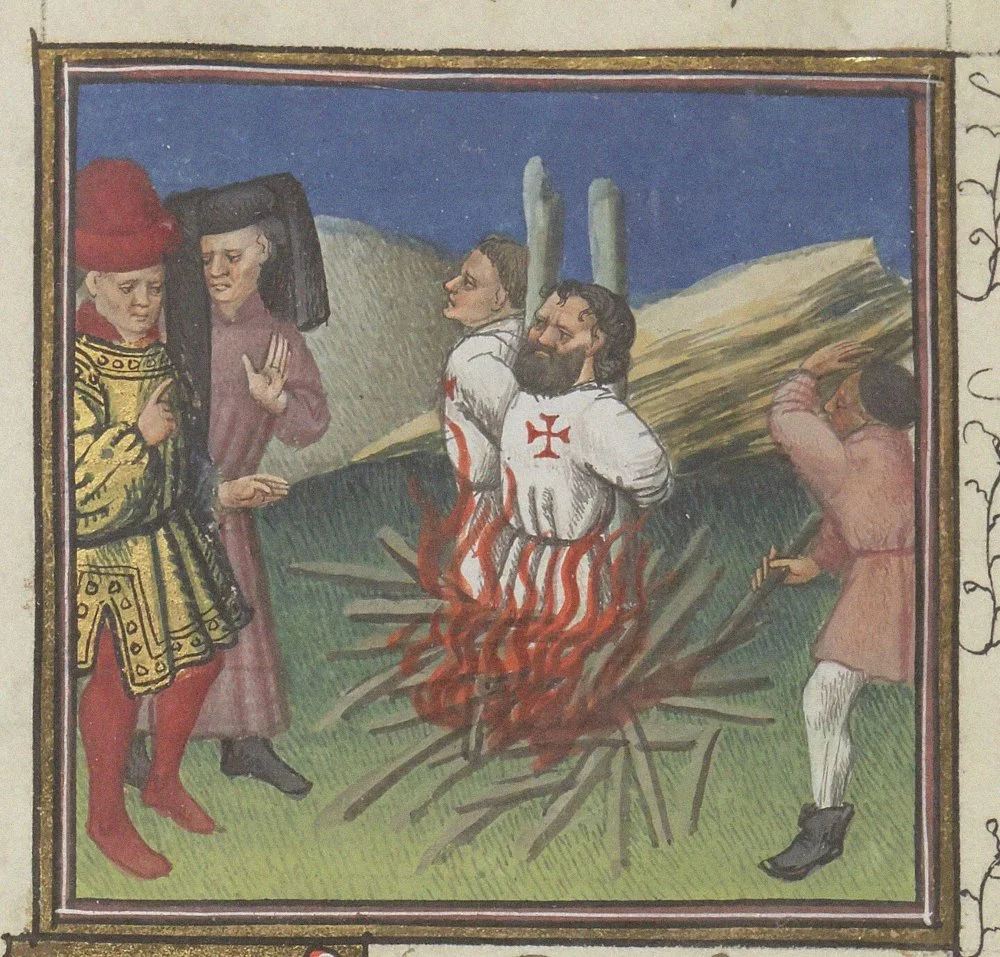
Execution of the Templars. From «Des Cas des nobles hommes et femmes» by Boccaccio, circa 1435-1440./Getty Images
Several hundred Templars were executed, and in 1314, Grand Masteri
Pope Clement died a month after the execution of the grand master, and seven months later, Philip the Fair passed away. Over the next fourteen years, three of his childless sons also died, and the direct line of the Capetian dynasty came to an end. The legendary curse of the Templars gave the French writer Maurice Druon a brilliant title for his series of historical books about the decline of the Capetians, The Accursed Kings.
How It All Began
In late 1119, in Jerusalem, eight or nine French knight-crusaders, led by the nobleman Hugues de Payens, pledged to devote their lives to protecting pilgrims traveling to the Holy Land. This occurred at the beginning of the era of the Crusades, when Europeans had conquered a strip of coastal land in the Middle East. Christian pilgrims arriving from Europe suffered severe adversity due to relentless attacks by the Muslims.
The knights enjoyed the patronage of King Baldwin II of Jerusalem (1118–31), who allocated them space in one wing of his palace, which was located at the site of Solomon's Temple—essentially, they lived in the Al-Aqsa Mosque. The knights acquired the title ‘Templars’ or Temple Knights—derived from the Latin templum, meaning ‘temple’—from this temple, though they commonly identified themselves as the Poor Fellow-Soldiers of Christ.
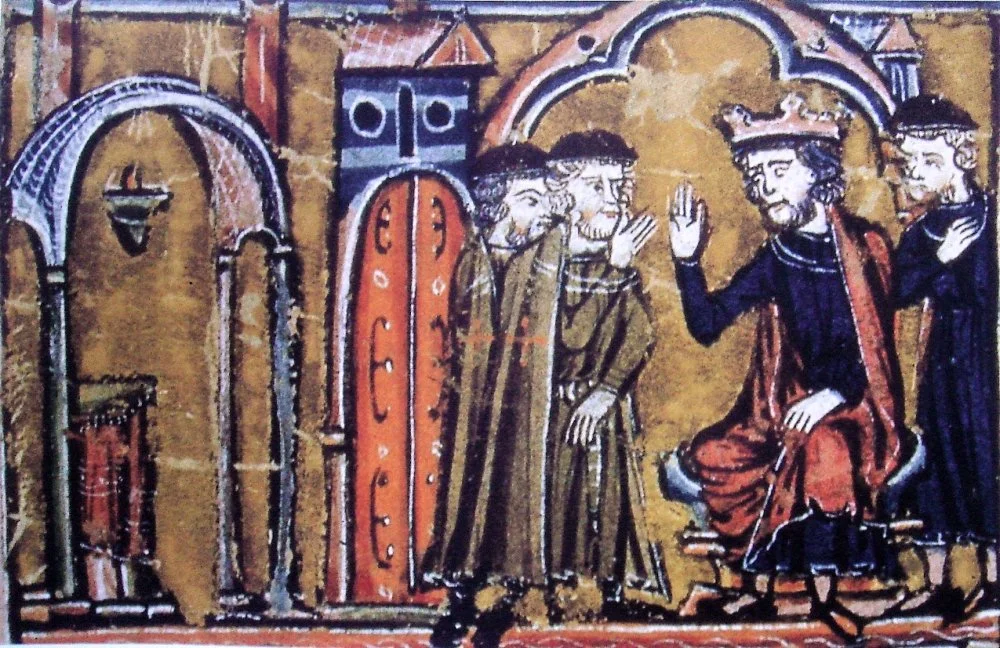
Baldwin II ceeding the location of the Temple of Salomon to Hugues de Payns and Gaudefroy de Saint-Homer /Wikimedia Commons
To this day, many cities in Western Europe bear references to the Templars in their geographical names. In Berlin, there's the district of Tempelhof, literally translating to ‘Temple Court’, where the old airport was located. In London, it's the Temple. However, perhaps the most famous street, square, metro station, and market are all in Paris—each named Temple. Once, the castle of the Templars stood here, but it was later transformed into a prison. During the French Revolution, the Temple housed the French royal family, descendants of Philip the Fair. It was from the Temple that Louis XVI and later his wife, Marie Antoinette, were sent to the guillotine.i
The image of a Templar—a stern warrior, solitary in his sacred service, attuned to mystical knowledge, and suffering innocently—raises the question of what truly led to the downfall of the most powerful order in medieval Europe. The persecutors of the Templars accused the knights of serving demons, with the primary one being a demon with the head of a goat.
Baphomet
The name of the demon Baphomet was mentioned in the accusatory documents presented against the Templars in Paris in 1307. Under torture, the brothers admitted to the practice of secret rituals within the order. The court papers stated that the Templars spat on the holy cross and held secret gatherings where they served the devil or the demon Baphomet. They supposedly had an idol of Baphomet, which they allegedly worshiped during their blasphemous rituals. Thanks to the inventiveness of the accusers, Baphomet indeed became a well-known figure—albeit several centuries after the demise of the Templars—in the occult sciences and esotericism of the modern era. In the nineteenth century, his anthropomorphic image had the head of a goat, hooves, and wings. He was endowed with both feminine and masculine attributes, becoming an allegorical symbol of the balance between masculine and feminine principles as well as wisdom.
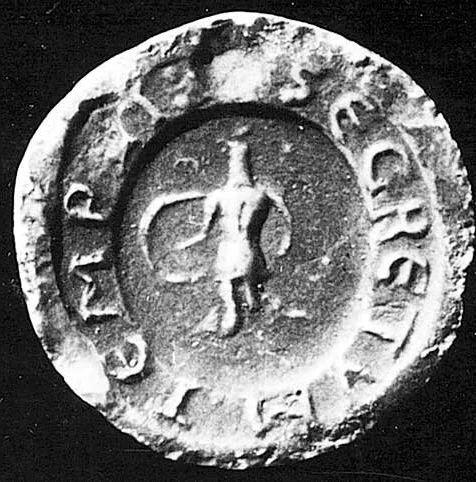
Seal of the Master of the Templars Guillaume de Chartres with Abraxas on the reverse, 1214.
The Poor Fellow-Soldiers of Christ most likely had no connection to the demon. Some historians suggest a quite plausible explanation that the name Baphomet was a misinterpretation of the Arabic abufihamat, meaning ‘Father of Understanding’ or ‘Father of Wisdom’. Unsurprisingly, the Templars borrowed Arabic words since they had lived in the East for a long time, side by side with Muslims, and had learned to approach them with tolerance and respect. With a deep internal faith, they saw no sense in demeaning other religions in daily life or politics. For example, as described by Usama ibn Munqidh, an Arab military commander, writer, and diplomat, their friendship was so close that Usama could engage in prayers upon entering the company of the knights.
Still, as the saying goes, where there is smoke, there is fire. Indeed, historians lack any documents confirming the Templars’ use of an idol or symbolic representations of Baphomet, but they also lack reliable evidence to the contrary. However, evidence of peculiar occurrences does exist. For example, in 1214, the Templar Master Guillaume de Chartres affixed a mysterious seal depicting Abraxas to a French ordinance of the order.
Abraxas is an ancient mystical being whose images have appeared on amulets since antiquity (second century CE) and spread as talismans and charms through Gnostici
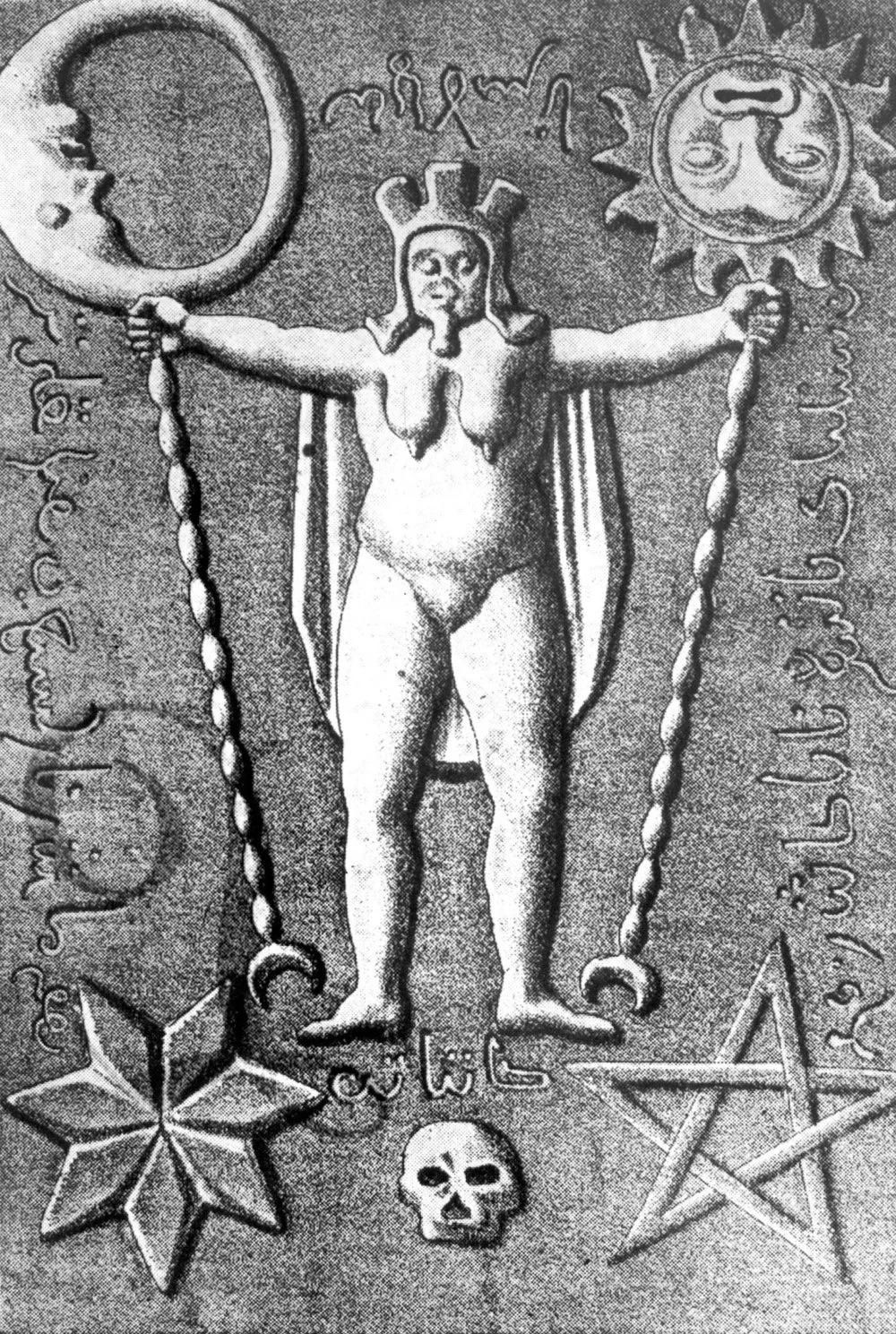
Freemasonry, The Baphomet (the Devil), idol supposedly worshipped by the Templars/Getty Images
Understanding that the Templars originated in the East as a spiritual brotherhood is essential. Alongside other monastic orders, they possessed their own sacred rituals and were well-versed in mysticism. Simultaneously, they were familiar with Eastern esotericism, had an understanding of Sufism, and possessed ancient wisdom.

Abraxas from Infernal Dictionary. 1863 /Wikimedia Commons
Every knight wishing to join the order took three monastic vows: celibacy, poverty, and obedience. They underwent a special initiation ceremony into becoming warrior monks, the details of which are unknown to us. They became part of a strict hierarchical system where they were to serve in the name of the Lord, obeying senior brothers and the grand master and adhering to a rigorous code of conduct. Masses and specific rituals related to military duty, such as prayers and blessings before battle, were common practices. Further, the Templar order required its members to swear an oath to keep the brotherhood's secrets. Thus, the mystery surrounding the Templars gave rise to countless rumors and speculations.
There were rumors that during the initiation ceremony, and even other secret rituals, the Templars used the Holy Grail, a mystical vessel or cup they had found and kept. Legend has it that this cup was the one from which Jesus drank during the Last Supper, and Joseph of Arimatheai

Giovanni Bellini: The Blood of the Redeemer probably 1460–65. London National Gallery/Wikimedia
Each of the listed characteristics of the order, taken individually, did not stand out as extraordinary for the medieval era. However, in the case of the Templars, the commitment to monastic vows, adherence to strict internal rules, openness to external knowledge, and involvement in the military-political affairs of the East eventually fused the image of a secret organization in the collective consciousness. Its power was believed to result not only from asceticism, intelligence, and efficient administration but also from the intervention of supernatural forces, either of the Holy Grail or the demon Baphomet.
Greed
Another demon that haunted the knights appeared in the form of a she-wolf. This is how Dante Alighieri, who lived around the same time as the fall of the Templars, portrayed one of the most dreadful sins for medieval society—greed—in his Divine Comedy.
In the year 1119, Hugues de Payens and his comrades-in-arms did not envision the creation of a powerful secret society. They simply wanted to protect pilgrims traveling from Europe to worship the Holy Sepulchre in Jerusalem, recently reclaimed from the Muslims by the crusaders. Having established themselves in Syria and Palestine, the crusaders found themselves at the crossroads of trade routes from Europe to India and China. The Templars took on the responsibility of securing these routes and transactions.

Knights Templar before Jerusalem, c1099, (14th century)/Getty Images
When Baldwin II offered the poor brethren shelter in his palace and land holdings, providing them with a means of livelihood, his intentions went beyond divine matters or safeguarding pilgrims. He foresaw the opportunity to utilize these devout warriors to establish a stable life in the conquered lands. The Templars played a multifaceted role—safeguarding pilgrims from thieves and bandits and actively participating in all military campaigns of the crusaders. They built fortresses, conducted peaceful negotiations with adversaries, and frequently undertook covert missions. Swiftly, they became a crucial pillar of support for the Christian elite in the Middle East.
Initially, not everyone approved of the idea of a spiritual order of warriors, seeing a profound contradiction between two missions—a purely religious one, demanding purity and prayer, and a military one, requiring the shedding of blood and taking lives. However, the situation underwent a radical change over time.
In 1127, the founder of the order, Hugues, embarked on a significant journey across Europe and received a warm reception. Many prominent individuals made substantial donations to support the Knights Templar. In 1128, the renowned preacher Bernard of Clairvaux wrote a ‘rule’—the charter of the order—and supported them strongly. This support shielded the Templars from critics and led to a mass influx of new members.
Finally, in 1139, Pope Innocent II granted the Templars a papal bull,i
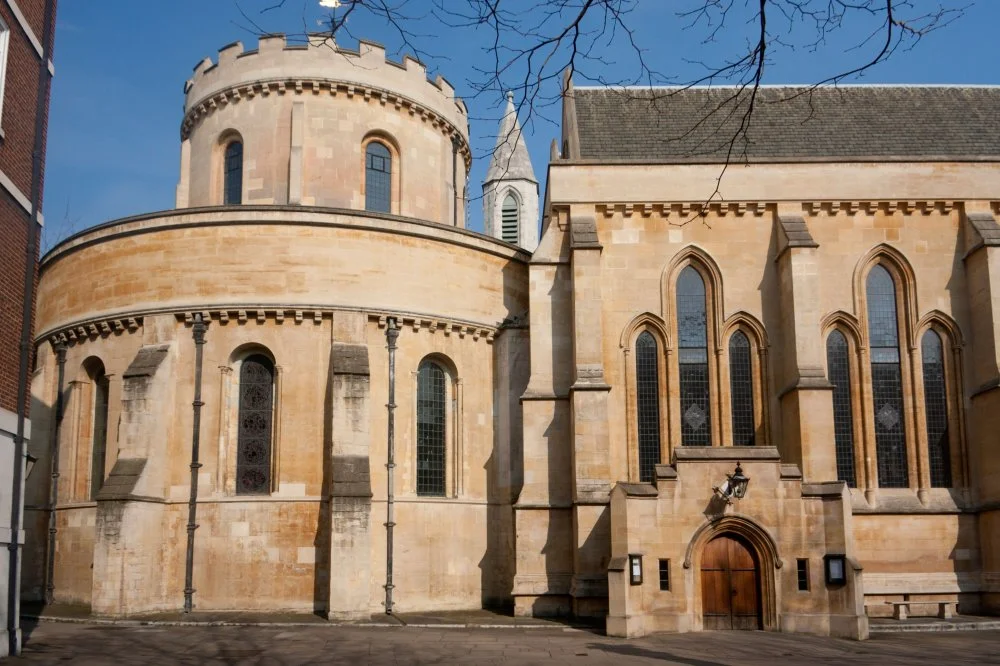
The Temple Church architectural detail including part of circular apse on left of frame Temple City of London England UK/Alamy
The combination of a profound idea manifested in the Christian faith and the crusader movement, coupled with practical activities and exclusive privileges, all multiplied by their status within the church hierarchy, propelled the order to power and helped them amass truly fabulous wealth. Additionally, the accumulated riches continued to grow because they were not divided among any heirs.
Indeed, every warrior entering the order took a vow of non-acquisition, relinquishing their property, which was then transferred to the order. So, individually, each was a poor holy warrior monk, but the brotherhood as a whole possessed enormous assets in the form of land holdings, monasteries, fortresses, and residences in the Middle East and Europe.
Anyone desiring the protection of the order could transfer their property to it and expect to live a secure and carefree life. Many young men from royal families, some of whom later became kings, received military and spiritual training with the Templars. So, the brilliance of the financial model underpinning the order's activities lay in the fact that individuals, both modest and those at the highest echelons of Christian society, were interested in the order. They were willing to pay handsomely for its services, both materially and otherwise. Simultaneously, their properties, preceptories,i
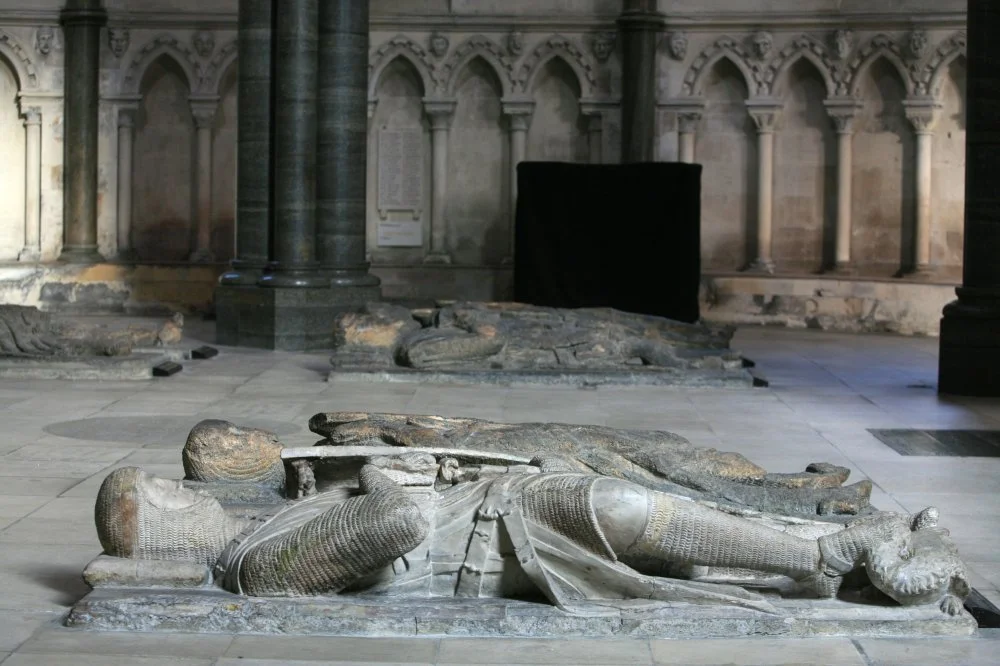
Templars' church in London/Getty Images
Thanks to this, the Templars succeeded in constructing a comprehensive trade and financial network in Europe and the Levant, safeguarded by both weapons and the law. The extensive structure of the order, crafted over many generations, comprised 5,000 commanderies with affiliated monasteries and castles. The Templars' preceptories, serving as local governing bodies, had their own offices, residences, and churches for the brothers. The Templars wielded significant influence, particularly in Spain, Portugal, France, and England.
The Templars are often dubbed the first bankers of Europe. The order successfully tackled a crucial challenge—unlike all others, they could securely facilitate the transfer of funds between agents situated hundreds of leagues apart. Pilgrims, travelers, or merchants could deposit money, property, or valuable items with the Templars in Paris or Cyprus. Upon arriving in Jerusalem or London, they gained access to the deposited funds by presenting a document at a local institution of the order.

Avarice. A miniature with scenes of banking. Artist: Master of the Cocharelli Codex (active ca 1330)
The Templars also devised their own unique accounting system, maintaining detailed records of insurance loans, debts, and repayment conditions, greatly enhancing the efficiency of their financial activities. They pioneered the use of checks, bills of exchange, and insurance. In the event of a pilgrim's death during the journey, their heirs could receive money or valuable items left with the Templars in the nearest preceptory. However, their contemporaries were unaware of the details of the order's financial activities, and their financial operations lacked transparency. Over time, as the order's power grew, this led to numerous suspicions and even accusations against them.
Further, the order was also involved in financing and supplied funds to almost all ruling houses of Europe. Specifically, the French king Philip the Fair received a substantial loan from the Templars shortly before deciding to initiate legal proceedings against them. Needless to say, he didn't have to repay these funds.
Thus, the wealth that the poor brethren of Christ diligently avoided became an irresistible temptation for some of their enemies and a haunting specter for others.
Pride
However, it wasn't just the wealth of the Templars that caught the attention and disrupted the sleep of both Philip the Fair and Pope Clement V, who were dreaming of acquiring the assets of the ubiquitous order. The third demon subtly leading the order to its demise was pride, which manifested in ambition.

Bernard de Clairvaux. . circa 1267-76. (Initiale-B)/Alamy
Certainly, if we could ask an ordinary Templar, or even the grand master of the order, whether anyone among them aspired to power, both would undoubtedly consider such a question absurd. They took sacred vows and willingly shouldered the burden of humility and obedience, adhering to strict rules and restrictions, dedicating their lives to a grand mission. The brothers' motto was: ‘Not to us, Lord, not to us, but to your name give glory!’i
However, in practice, the order wielded immense power. First, it consistently maintained highly skilled military units with extensive combat experience. Second, it controlled vast financial resources. Third, the Templars were a cohesive, elite community with colossal influence. Finally, they claimed independence. They never submitted to secular authorities, and after Innocent II's bull, they also ceased to obey local church authorities. The only authority they heeded was the Roman pope. With a strict internal discipline and hierarchy, they seemed to exist outside the ordinary order of the world. However, monarchs listened to their opinions, and they educated future kings, participated in church councils, and lent money for royal land acquisitions, marriages, and more. All of this frightened their contemporaries and gave rise to wild rumors and speculations. It was said that the Templars not only knew how to fight for God's cause but also engaged in intrigues, influencing politics through bribery and threats, and were even accused of conspiring with Muslims.
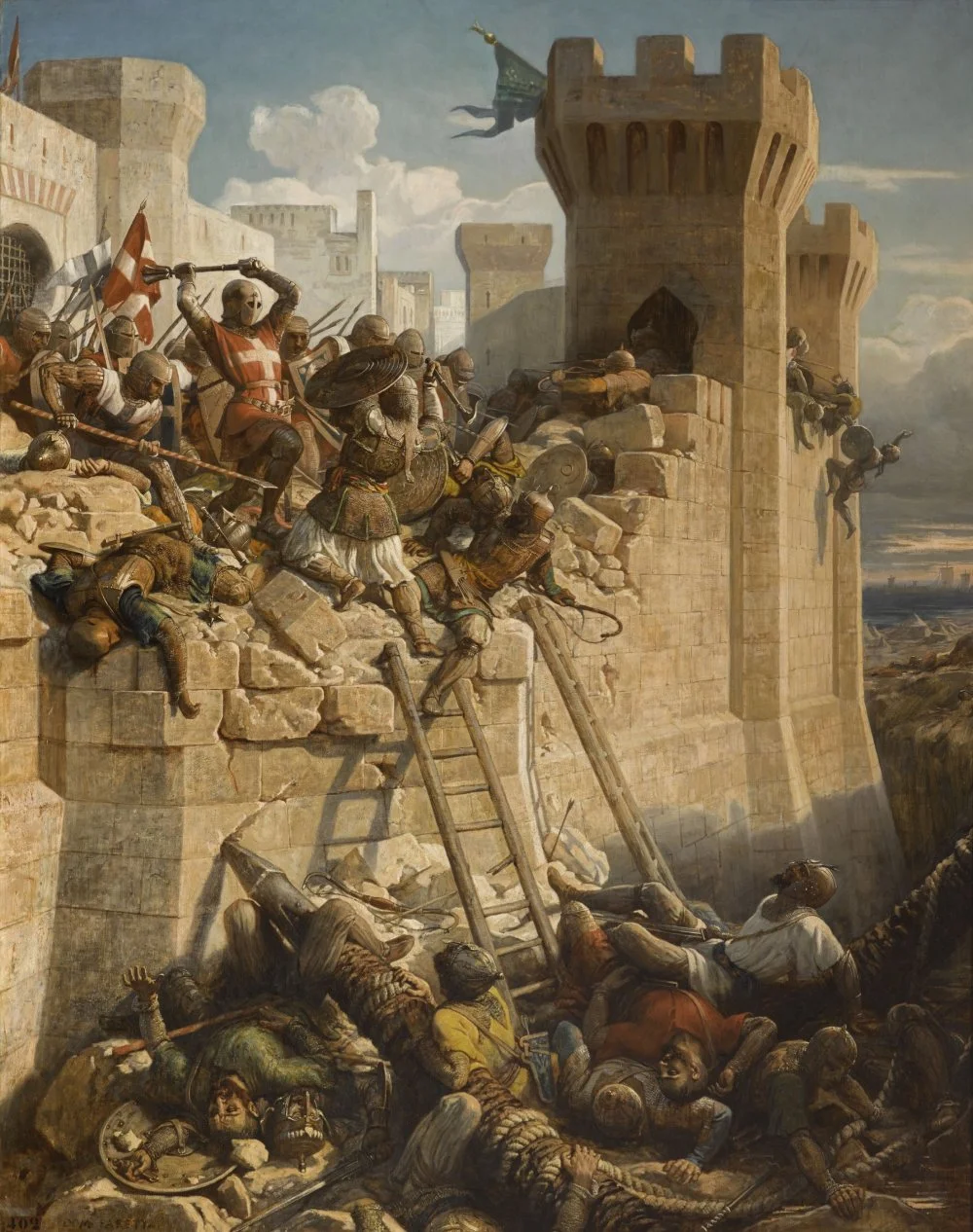
The Hospitaller Maréchal. Matthew of Clermont, defending the walls at the siege of Acre, 1291, by Dominique Papety/Wikimedia Commons
By the beginning of the fourteenth century, secular rulers in Europe, who were gaining political strength, were inclined to express concern about the order and were somewhat burdened by its influence. The wealthy, entirely independent, and heavily armed Templars caused both alarm and jealousy among kings. As a result, the meticulous and ruthless Philip the Fair, who had done much for the centralization of France, began seeking a pretext under which he could deal with the overly independent and influential knights, which could, incidentally, bring him considerable material benefits.
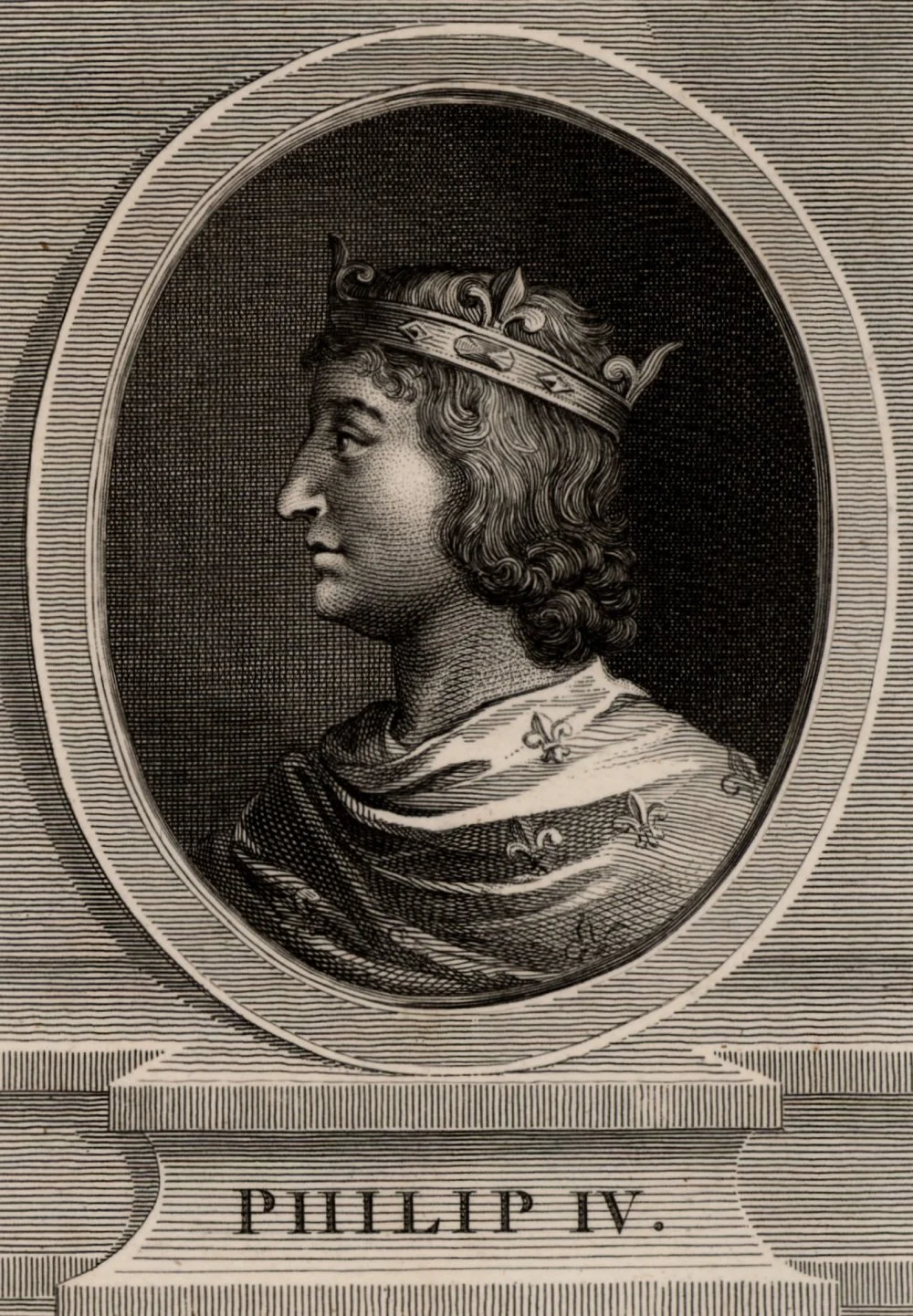
Philip IV, the Fair (1268-1314). 1793/Getty Images
The opportunity presented itself when a certain Esquieu de Floyran from Beziers, a criminal willing to provide any testimony against the order to buy his freedom, suddenly appeared. Initially, he claimed to have information about the Templars’ secrets and offered it to the Aragonese king James II, but he wanted clear and reliable evidence. Esquieu then found a willing client in the French king.
Bloodshed
The fourth demon of the Templars was the demon of war. Paradoxically, despite being a military-spiritual fraternity born during the crusades, it was that very war that gave rise to the order that ultimately led to its decline.
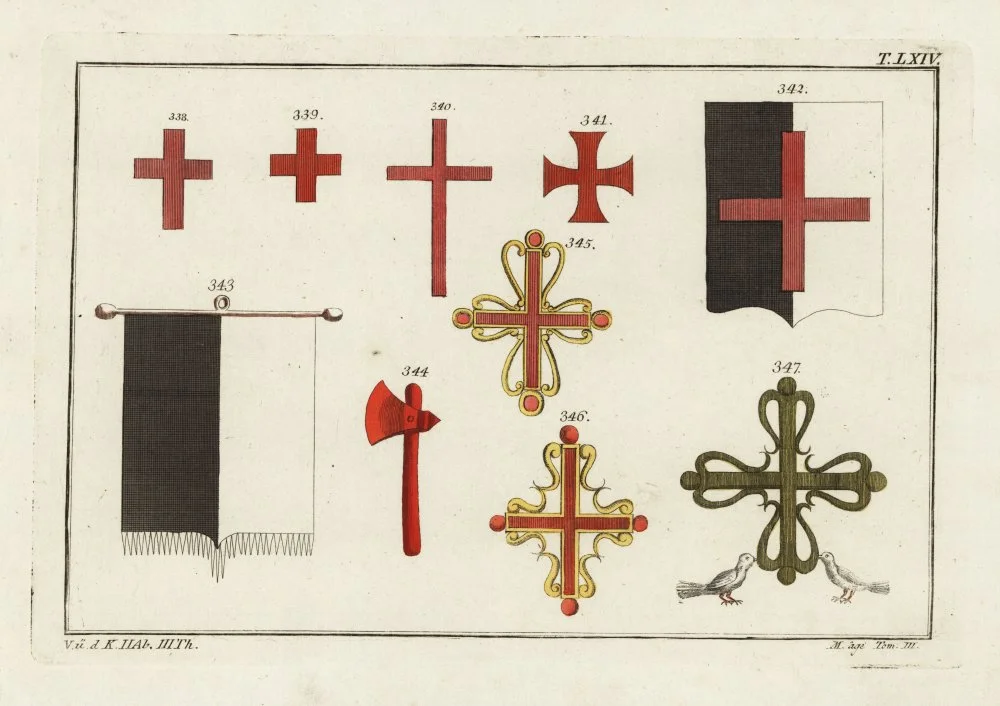
Crosses of various orders of Knights Templar. Copied from Jacques Charles Bar's Costumes des ordres religieux et militaires, 1778. /Getty Images
With the emergence of the Mamluk Sultanatei

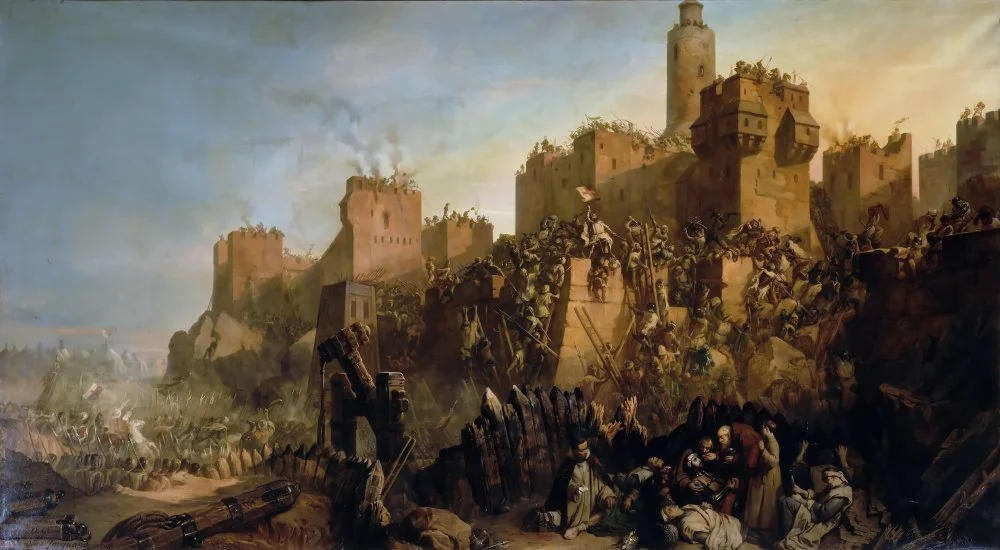
The capture of Jerusalem by Jacques de Molay in 1299. Found in the collection of Musée de l'Histoire de France, Château de Versaills/Getty Images
The death of the crusading mission itself cast a dark shadow on the brothers, foreshadowing their demise. The demon of war spread its wings, overshadowing the sun of the sacred feat. With the loss of their grand master Guillaume de Moer in the battle for Acre, the Templars relocated their headquarters to Cyprus. The ‘financial empire’ they had created had also lost stability, being deprived of the basic idea of the order as a connecting channel between the East and the West. This was not yet the beginning of the end but a harbinger of complex changes that the order simply did not have time to prepare for.
Under the leadership of the grand masters, the order consisted of up to 20,000 brothers, each belonging to one of the four classes: knights, chaplains, sergeants or men-at-arms, and servants and officials. Knights, when going into battle, would don a heraldic surcoat, an upper garment featuring the symbolic emblem of the order. The knights’ surcoat was white with a red cross pattee sewn on it. Armed with a sword and shield, they could also utilize a spear and mace.
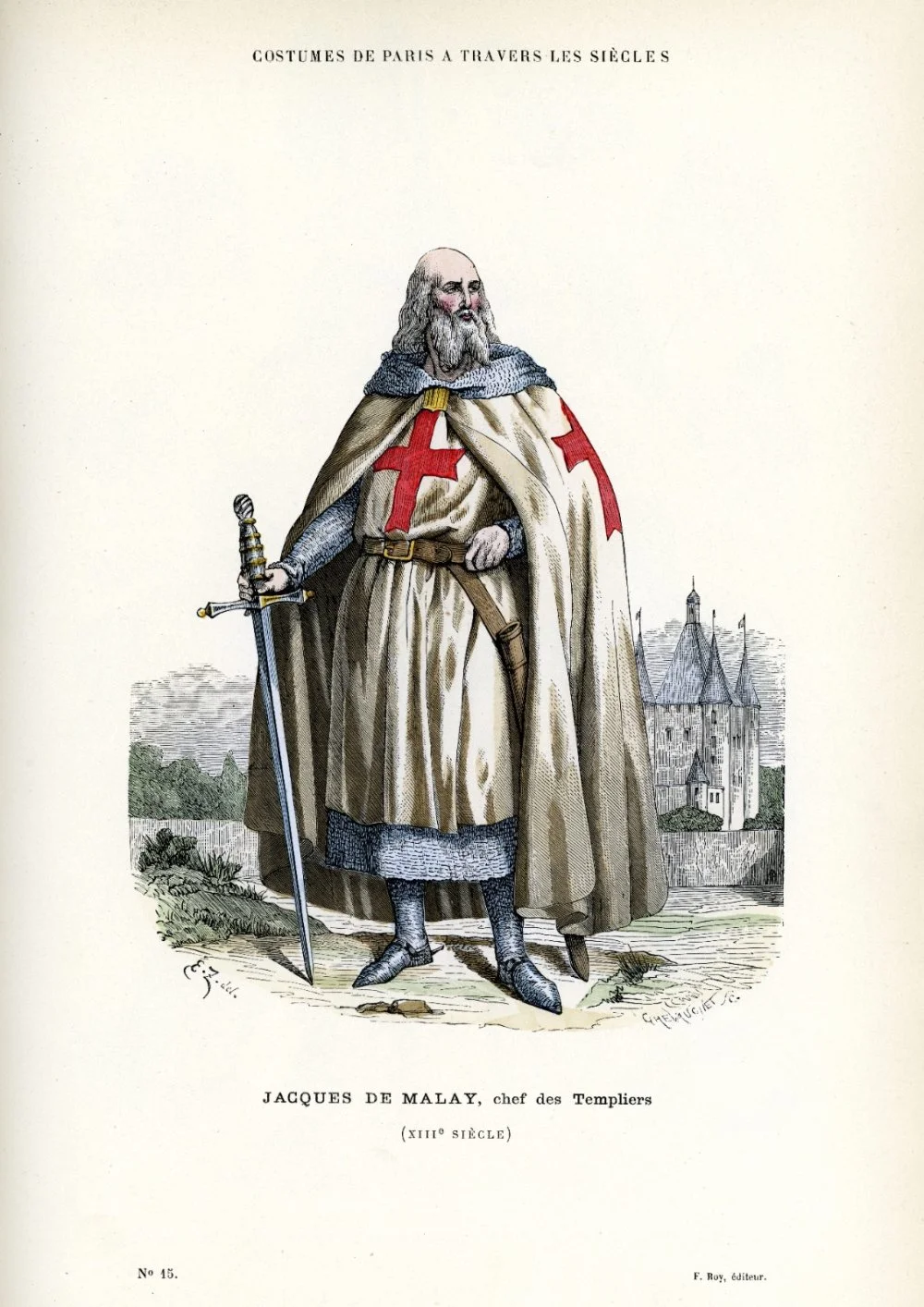
Vintage lithograph of Jacques de Molay/Getty Images
During battle, the marshal would raise the banner, the renowned Templar Beauseant, divided into white and black fields, symbolizing their unyielding stance against enemies and benevolence towards friends. In the thirteenth century, the cross pattee could be depicted on the white field. During combat, the Templars would shout, ‘The Beauseant to the rescue!’
While on a campaign, the Templars slept in tents, and their belongings were packed into two bags. One was for clothing, which contained two shirts, two pairs of pants, upper garments, and a cloak. The other was for armor, containing chainmail, chainmail stockings, and a helmet. The most numerous within the order were the simple knights, sergeants, and men-at-arms. Strict discipline and a rigid hierarchy formed the foundation of the Templars' military success.

Drawing of two knights on a horse, the emblem of the Knights Templar, from the Historia Anglorum of Matthew Paris 13th century/British Library
However, the military mission of the order was steadily declining. Neither the pope nor European monarchs needed thousands of battle-hardened men accustomed to the Templars' independence. The Templars, once a formidable force capable of defending and advancing, now threatened to become a dangerous internal player or even an opponent with colossal human, financial, and administrative resources.
The sacred war they waged in the East was lost. Until the end of World War I in 1918, the Middle East stayed under the control of the Crescent.i
‘Sodomy’
The fifth demon of the Templars flew to the shores of the Seine from the Dead Sea, from the biblical Sodom, incinerated by the God of the Old Testament for debauchery. Investigators of the French king accused the brothers of Christ of engaging in homosexual relationships. On the famous two-sided seal of the Templars, on one side was depicted the dome of the Temple in Jerusalem, and on the other side were two knights riding on one horse. Most likely, this image of two comrades-in-arms closely pressed to each other during their common campaign symbolized brotherhood. But how else could one interpret it?

Knights Templar’s seal. Replica / Wikimedia Commons
In the closed world of the male monastery, homosexual relationships sometimes arose, as hinted at from time to time by various medieval sources. However, much more often, monks were caught in traditional relationships with women of lower social responsibility. Historians have no data to claim that the Templar order was devoted to sodomy as was insisted upon by their persecutors. Though, presumably, such relationships did occur occasionally, as in other orders, at court, or among ordinary people. The fetish of ‘traditional values’ has been serving tyranny for centuries, and accusations of immoral behavior are amongst the favorite tools of political struggle. To discredit the order, renowned for its battles for the Holy Land, it was necessary to strip it of the high halo of purity and sanctity. The carnal ‘low’ fulfilled this task at least as effectively as Baphomet.
Epilogue
Nearly two centuries had passed since the moment nine knights united in a sacred brotherhood, bound by martial camaraderie and devout goals, to the dying cry of the last grand master in the tongues of flames. Time, like the sand of the Judean desert, slipped through the fingers of the poor brothers. Across more than two centuries, the order witnessed the transition of over ten knightly generations, with twenty-three grand masters presiding over its governance.
Whether many or few, for 200 years, the Knights Templar held spiritual, financial, and political power in the heart of Western civilization at that time, along the shores of the Mediterranean. To us in the twenty-first century, these 200 years may seem like a vaguely unified temporal segment. However, it was precisely during that time that the traditional way of life of European Christians underwent radical changes, largely thanks to the crusaders and pilgrims returning from the East. The European elite learned to appreciate fine silk fabrics, silver and glassware, exquisite cuisine, and spices. To purchase luxury items, lords replaced natural tributes with monetary ones, contributing to the development of the internal market in Europe and leading to the growth of cities.
In the fourteenth century, among the major cities on the map of Europe were not only Constantinople and Cordoba but also Paris, London, Venice, Milan, Genoa, Bruges, and many others. Universities, institutions of estate representation—future parliaments—and advanced record-keeping, libraries, and archives began to emerge here. In this emerging Europe, distinct notions of national identity began to to be shaped, diverging from the universalist Christian selfhood embodied by the Templars. The time of transnational corporations was receding into the past. The era of nation-states and institutions was dawning.

The Temple area, Paris, France; 1750 / Getty Images
After the fall of the Templars, their property mostly ended up in the hands of the Hospitaller order. However, the Hospitallers had to pay enormous legal fees for the Templars’ trial in France. They even complained that they became poorer rather than richer after this experience. Philip the Fair did not gain immeasurable wealth either—all the possessions of the order remained in the hands of the church, and a significant portion of the funds was sent beyond the borders of the French kingdom. The condemnation and demise of the knights cast a dark shadow on Philip and his posthumous memory.
However, the torture, executions, and lifelong imprisonments of the Templars primarily took place in France and its vassal lands. Despite Philip the Fair's calls to all the monarchs of Europe to eradicate the heretic knights, kings were not eager to join this action. In the lands of the Crown of Aragon,i
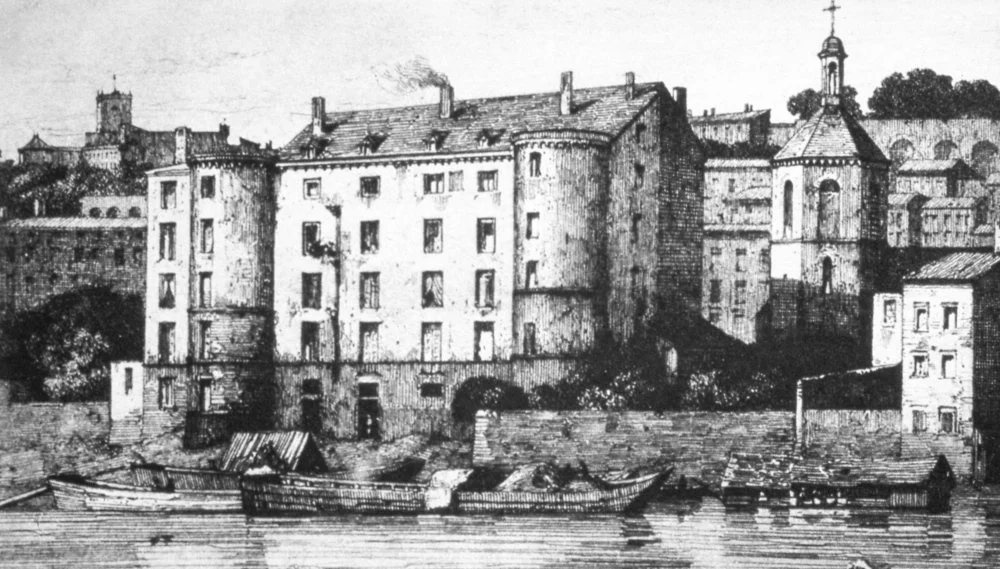
Templars’ residence , vers 1800, France/Getty Images
King Edward I of England, who was raised among the Templars and was initiated as a knight in their London temple, was similarly uninterested in persecuting the holy brothers. The architectural marvel of this temple, known as the Temple, still stands today. Resembling the Dome of the Rock in Jerusalem, the Temple, like all Templar temples, has an oval shape. Inquisitors faced prolonged denials of permission to visit the island, and the Templars, unlike their French counterparts, were forewarned of the danger. Many managed to escape, including to Scotland. It was in Scotland that the movement known as Freemasonry originated, genetically linked to the Templars. Umberto Eco eloquently depicted this connection between the order and the Masons in his famous novel Foucault's Pendulum.
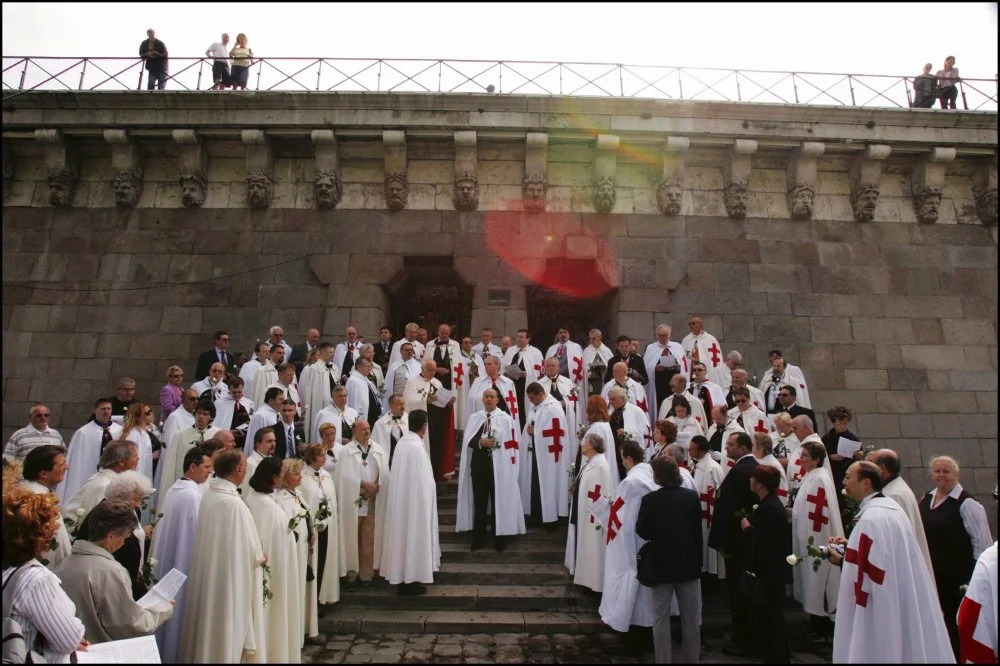
Ceremony Of The Temple Knights In Paris/Jean-Francois DEROUBAIX/Getty Images
иThe gruesome executions and the legendary curse of the last grand master continued to stir memories until, at last, the history of the Templars became firmly embedded in the cultural code of Europeans. To this day, the image of a knight who, for the sake of the Lord, renounced all desires, both worldly and of the flesh, traversing the desert of temptation and sin while possessing an inexhaustible strength of secret sacred knowledge, is preserved in European cultural memory. This legacy permeates modern literature, as seen in Arturo Pérez-Reverte's The Skin of the Drum, the novels of Dan Brown, or when visiting the unusual oval temples in London and Tomar. Even picking up a tarot deck can evoke the sense that the order's influence is still alive.
